Related Research Articles

Bushrangers were originally escaped convicts in the early years of the British settlement of Australia who used the bush as a refuge to hide from the authorities. By the 1820s, the term had evolved to refer to those who took up "robbery under arms" as a way of life, using the bush as their base.

Thunderbolt is a 1910 film in the genre of "outlaw" films at the time that tended to glorify the life of the outlaw "Bushrangers" that roamed the Australian outback in pre-commonwealth days. Shortly after this film was made, the government of New South Wales banned the manufacture of this type of film on the basis that they were promoting crime.
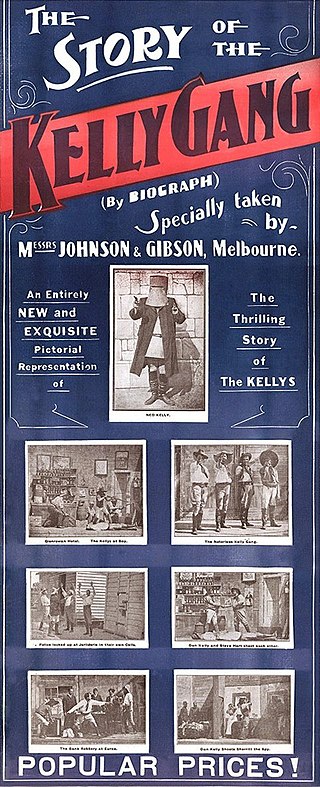
The Story of the Kelly Gang is a 1906 Australian Bushranger film directed by Charles Tait. It traces the exploits of 19th-century bushranger and outlaw Ned Kelly and his gang, with the film being shot in and around Melbourne. The original cut of this silent film ran for more than an hour with a reel length of about 1,200 metres (4,000 ft), making it the longest narrative film yet seen in the world. It premiered at Melbourne's Athenaeum Hall on 26 December 1906 and was first shown in the United Kingdom in January 1908. A commercial and critical success, it is regarded as the origin point of the bushranging drama, a genre that dominated the early years of Australian film production. Since its release, many other films have been made about the Kelly legend.

Frederick Wordsworth Ward, better known by the self-styled pseudonym of Captain Thunderbolt, was an Australian bushranger renowned for escaping from Cockatoo Island, and also for his reputation as the "gentleman bushranger" and his lengthy survival, being the longest-roaming bushranger in Australian history.
Mary Ann Bugg was a Worimi bushranger, one of two well-documented women bushrangers in mid-19th century Australia. She was an expert horse rider and bush navigator who travelled with her bushranging partner and lover Captain Thunderbolt.
"The Wild Colonial Boy" is a traditional anonymously penned Irish-Australian folk ballad which tells the story of a bushranger in early colonial Australia who dies during a gunfight with local police. Versions of the ballad give different names for the bushranger involved: some based on real individuals and some apparently fictional. A common theme is romanticisation of the bushranger's battle against colonial authority. According to a report in The Argus in November 1880, Ann Jones, the innkeeper of the Glenrowan Hotel, had asked her son to sing the ballad when the Kelly gang were at her hotel in June that year.
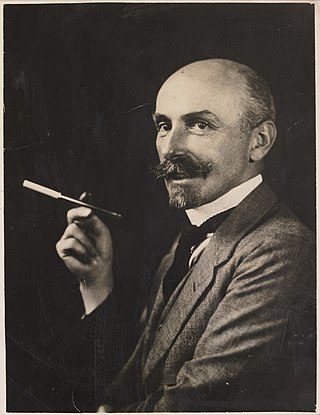
Ambrose Goddard Hesketh Pratt was an Australian writer born into a cultivated family in Forbes, New South Wales.
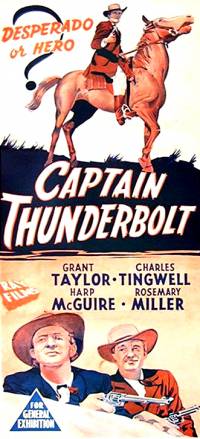
Captain Thunderbolt is a 1953 Australian action film from director Cecil Holmes about the bushranger Captain Thunderbolt. It was one of the few all-Australian films of the 1950s.

Edmund Duggan was an Irish-born actor and playwright who worked in Australia. He is best known for writing a number of plays with Bert Bailey including The Squatter's Daughter (1907) and On Our Selection (1912). His solo career was less successful than Bailey's. His sister Eugenie was known as "The Queen of Melodrama" and married noted theatre producer William Anderson, for whom Duggan frequently worked as an actor, writer and stage manager.
The Squatter's Daughter or, The Land of the Wattle is a 1907 Australian play by Bert Bailey and Edmund Duggan, writing under the combined pseudonym Albert Edmunds.
The Life and Adventures of John Vane, the Notorious Australian Bushranger is a 1910 Australian silent film about the bushranger John Vane, who was a member of Ben Hall's gang. It is considered a lost film.
The Squatter's Daughter is a 1910 Australian silent film based on the popular play by Bert Bailey and Edmund Duggan.

Captain Midnight, the Bush King is a 1911 Australian silent Western film about the fictitious bushranger Captain Midnight. It was the directorial debut of actor Alfred Rolfe. The film is based on the play of same name by W. J. Lincoln and Alfred Dampier. Captain Midnight, the Bush King is now considered lost.
Captain Starlight, or Gentleman of the Road is a 1911 Australian silent film about the bushranger Captain Starlight. It was based on Alfred Dampier's stage adaptation of the 1888 novel Robbery Under Arms. It is considered a lost film.
The Sunny South, or the Whirlwind of Fate is a 1915 Australian silent film directed by Alfred Rolfe based on the popular play The Sunny South by George Darrell. It is considered a lost film.
The Squatter's Son is an Australian film completed in 1911 and directed by E. I. Cole. It was based on a play which Cole and his company had performed throughout Australia. The Squatter's Son was filmed at locations "in the vicinity of Melbourne". It is considered a lost film.
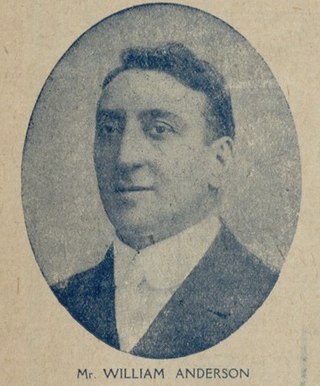
William Anderson was an Australian theatre entrepreneur.
My Mate, or a Bush Love Story is an Australian play by Edmund Duggan which was first produced in 1911.
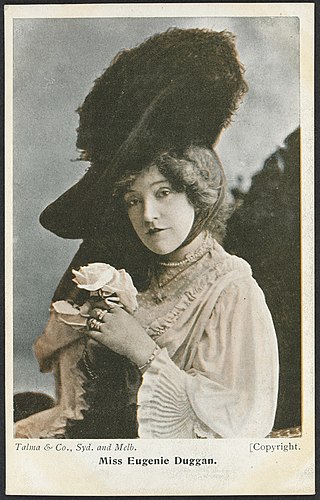
Eugenie Marian Duggan was a popular Australian stage actress. She was the sister of the actors Edmund, P.J. and Kathleen Duggan. She began studying acting, won a number of elocution competitions and made her professional debut in 1890 in Romeo and Juliet.
Three Years with Thunderbolt is a 1905 memoir by William Monckton concerning his time with the Australian bushranger Captain Thunderbolt. The book was edited by Ambrose Pratt.
References
- ↑ Three Years With Thunderbolt, The Argus (Melbourne), 28 August 1905, page 4.
- ↑ William Monckton and Ambrose Pratt (editor) (1910), Three Years With Thunderbolt , Sydney: The States Publishing Co.
- ↑ "The Theatrical Gazette". The Referee . Sydney: National Library of Australia. 11 October 1905. p. 10. Retrieved 30 November 2014.
- ↑ Synopsis of the play is at "Amusements". The Register . Adelaide: National Library of Australia. 31 January 1916. p. 7. Retrieved 30 March 2015.
- ↑ "Advertising". The Argus . Melbourne: National Library of Australia. 21 May 1910. p. 20. Retrieved 30 March 2015.
- ↑ "Advertising". The Sydney Morning Herald . National Library of Australia. 20 October 1905. p. 2. Retrieved 30 March 2015.